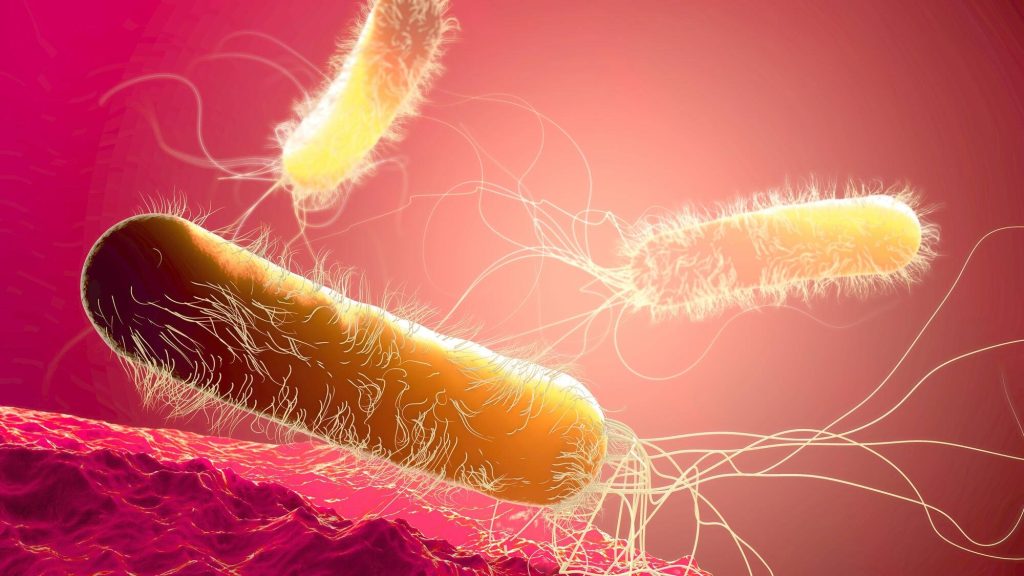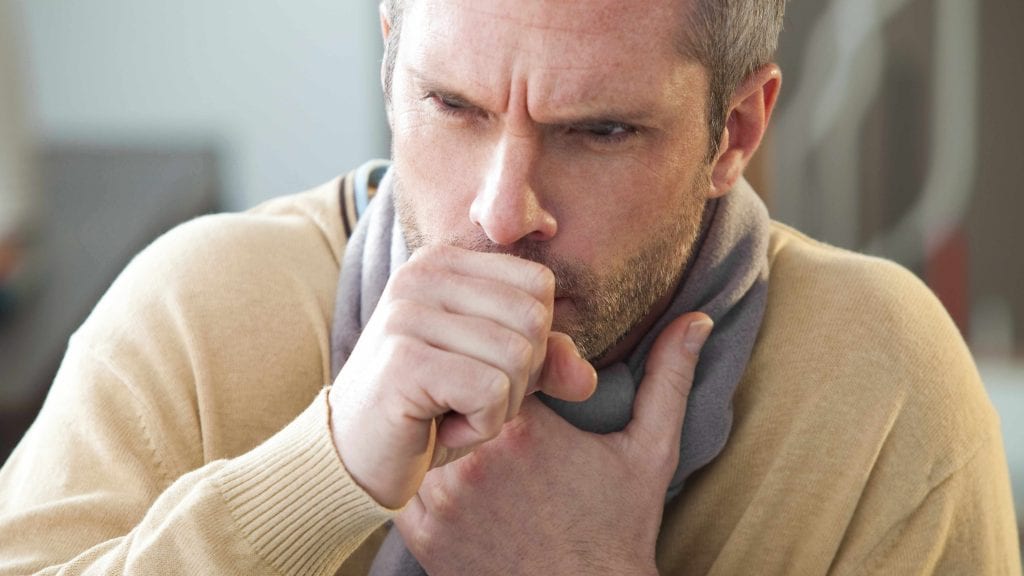Diagnosis
Your healthcare professional will likely ask you about your symptoms and medical history. You'll likely get a physical exam too. You also may need certain tests or imaging scans to help figure out the cause of your symptoms.
Lab tests
Many infectious diseases have symptoms in common. Samples of body fluids can sometimes point to the particular germ that causes the illness. This helps your care team make sure you get the right treatment.
- Blood tests. A healthcare professional inserts a needle into a vein, often in the arm.
- Urine tests. This involves urinating into a container.
- Throat swabs. Samples from the throat, or other moist areas of the body, may be taken with a sterile swab.
- Stool sample. You may be told to collect a stool sample in a container, so a lab can check for parasites and other organisms.
- Spinal tap. Also called lumbar puncture, this procedure uses a needle to take a sample of the fluid that surrounds the brain and spinal cord. A needle is carefully placed between the bones of the lower spine. You'll likely be asked to lie on your side with your knees pulled up toward your chest.
Imaging scans
Tests that make images of the inside of the body also can help your healthcare team figure out the cause of your symptoms. Imaging tests include X-ray, computerized tomography, ultrasound and MRI.
Biopsies
During a biopsy, a tiny sample of tissue is taken for testing. For example, a biopsy of lung tissue can be checked for a variety of fungi that can cause a type of pneumonia.
Treatment
Knowing what type of germ is causing your illness makes it easier for your healthcare team to choose the right treatment.
Antibiotics
Antibiotics are medicines that clear up illnesses caused by bacteria. They are grouped into classes of similar types. Bacteria also are put together in groups of similar types, such as streptococcus or E. coli. Some types of bacteria are especially prone to certain classes of antibiotics. Treatment can be targeted more precisely if your healthcare team knows what type of bacteria you're infected with.
Antibiotics have no effect on illnesses caused by viruses. But sometimes it's hard to tell which type of germ is at work. For example, pneumonia can be caused by a bacterium, a virus, a fungus or a parasite.
The overuse of antibiotics is a problem. Bacteria can change in response to these medicines. As a result, some types of bacteria can resist the effects of one or more varieties of antibiotics. This is called antibiotic resistance. It makes these germs much harder to treat.
Antivirals
These medicines can treat certain viruses. Examples include the viruses that cause:
- COVID-19.
- HIV.
- Herpes.
- Hepatitis B.
- Hepatitis C.
- Influenza.
Antifungals
Topical antifungal medications that you put on the body can treat skin or nail infections caused by fungi. Some fungal infections, such as those that affect the lungs or the mucous membranes, can be treated with an oral antifungal that you take by mouth. Worse infections of the internal organs may need to be treated with intravenous antifungal medicines. You receive these through a needle in a vein at the hospital.
Anti-parasitics
Some diseases, including malaria, are caused by tiny parasites. These organisms live in or on host organisms, which can include people. Parasites get their nutrients from or at the expense of their hosts. Medicines can treat diseases caused by parasites. But some types of parasites have developed resistance to the drugs.
Clinical trials
Explore Mayo Clinic studies testing new treatments, interventions and tests as a means to prevent, detect, treat or manage this condition.
Self care
Many infectious diseases, such as colds, go away on their own. Drink plenty of fluids and get lots of rest. If other people live in your home, try not to have close contact with them while you're sick. Think about wearing a mask around them.
Alternative medicine
Many products have claimed to help fend off common illnesses, such as the cold or flu. Some of these substances have appeared promising in early studies. But follow-up research may have had unclear results. In general, more research needs to be done.
Some of the substances that have been studied for preventing or shortening the length of infections include:
- Cranberry.
- Echinacea.
- Garlic.
- Ginseng.
- Vitamin C.
- Vitamin D.
- Zinc.
Check with your healthcare team before you try any products that promise to boost your immune system or chase away colds and other illnesses. Some of these products may cause side effects or mix poorly with other medicines you may be taking.
Preparing for your appointment
You'll probably first see your primary care team. You may get referred to a specialist, depending on how bad your infection is and what parts of the body it affects. For example, a dermatologist treats skin conditions. A pulmonologist treats lung disorders.
What you can do
You may want to write a list that includes:
- Detailed descriptions of your symptoms.
- Information about medical problems you've had.
- Information about your parents' or siblings' medical problems.
- All the medicines and dietary supplements you take.
- Questions you want to ask your healthcare professional.
Preparing a list of questions for your healthcare professional will help you make the most of your time together. For infectious diseases, some basic questions to ask include:
- What's the most likely cause of my symptoms? Are there other possible causes?
- What kinds of tests do I need?
- Is my condition likely temporary or long lasting?
- What treatment do you recommend?
- I have other health conditions. How can I best manage these conditions together?
- Is there a generic version of the medicine you're prescribing?
- Are there any brochures or other printed material that I can take home with me? What websites do you recommend?
What to expect from your doctor
Your healthcare professional is likely to ask you a number of questions, including:
- When did your symptoms begin, and how serious are they?
- Do your symptoms come and go, or do you have symptoms all the time?
- Have you recently come into contact with anyone who's sick?
- Have you been bitten or scratched by an animal? Or have you come into contact with animal feces?
- Do you have any insect bites?
- Have you eaten undercooked meat or unwashed vegetables?
- Have you been out of the country recently?






